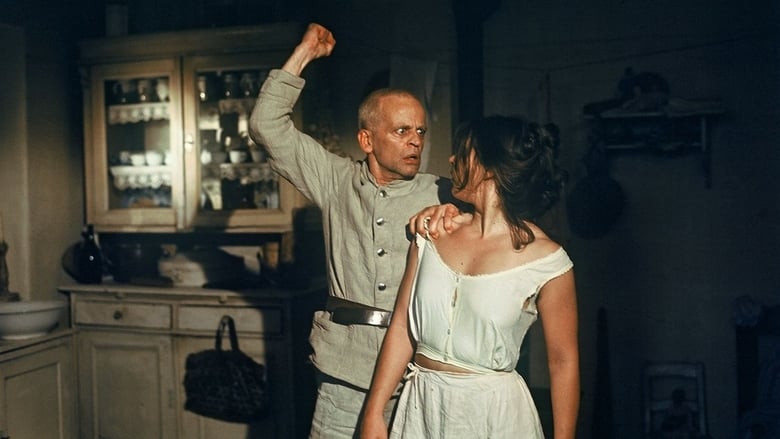
Werner Herzog’s Woyzeck (1979) adapts Georg Büchner’s nineteenth century play as an excruciatingly close-up look at a man’s psychological deterioration. Herzog shot the film immediately after wrapping Nosferatu Phantom der Nacht, taking full advantage of Klaus Kinski’s exhausted state to imbue the title character with a hauntingly real fragility. Woyzeck, in terms of content and aesthetic execution, is a film of cruelties.
Woyzeck is the closest thing to a family drama that Werner Herzog has ever made. The soldier Woyzeck (Kinski) is in love with Marie (Eva Mattes) and together they have a child. For Marie her partnership with Woyzeck is one of necessity while for Woyzeck it is one of romance. Slowly Woyzeck’s jealous and possessive nature drives him mad and he murders Marie as they picnic, only to down himself later on when he returns to the crime scene to better dispose of his knife.
Herzog’s camera stares unflinchingly at this macabre drama in Brechtian long takes. Woyzeck is always blocked so that during these long takes he moves closer and closer to the camera until Kinski’s face becomes the only thing the viewer will look at. The blocking and Kinski’s wildly theatrical performance create a grotesque figure out of Woyzeck who looks as if all of his violence is cruelly working its way through his body until it manifests itself externally in a frantic outburst.
In Stroszek obsession from within lead to oppression from without but in Woyzeck Herzog suggests that obsession itself is a destructive force on all fronts. Like Even Dwarfs Started Small (1970) cruelty is a universal fact in Woyzeck so it just becomes a matter of being more cruel first. Typically this is but a subtext to Herzog’s films but in Woyzeck sadism rules the day as it is both fetishized and feared by Herzog’s gaze.
The murder of Marie is the most powerfully disturbing series of images that Herzog ever put on screen. This brutal act of violence is captured in slow motion so that every contortion in the faces of Mattes and Kinski can be seen and studied. This slow dance of death is the thesis of Woyzeck. Every character interaction and every monologue has simply been this gruesome sequence in disguise.
Many of Werner Herzog’s choices as a director on Woyzeck seem more of Rainer Werner Fassbinder’s Anti-Theatre films than his own. For instance the somnambulistic manner in which the actors perform and the very stage-like center framing were all hallmarks of Fassbinder’s early efforts. Herzog absorbs Fassbinder’s post-modernist take on Bertolt Brecht and adds to it that one ingredient that only he had access to: Klaus Kinski.
Of their five collaborations together it is in Woyzeck that Kinski is most indispensable too Herzog. The success of the entire film literally hinges on Kinski’s own psychosis and how that is translated to the screen. This has the effect of rendering Woyzeck a film one hates to watch but can’t look away from. Woyzeck was more like Kinski than any other character he played for Herzog and the resulting film is terrifying for that reason.
